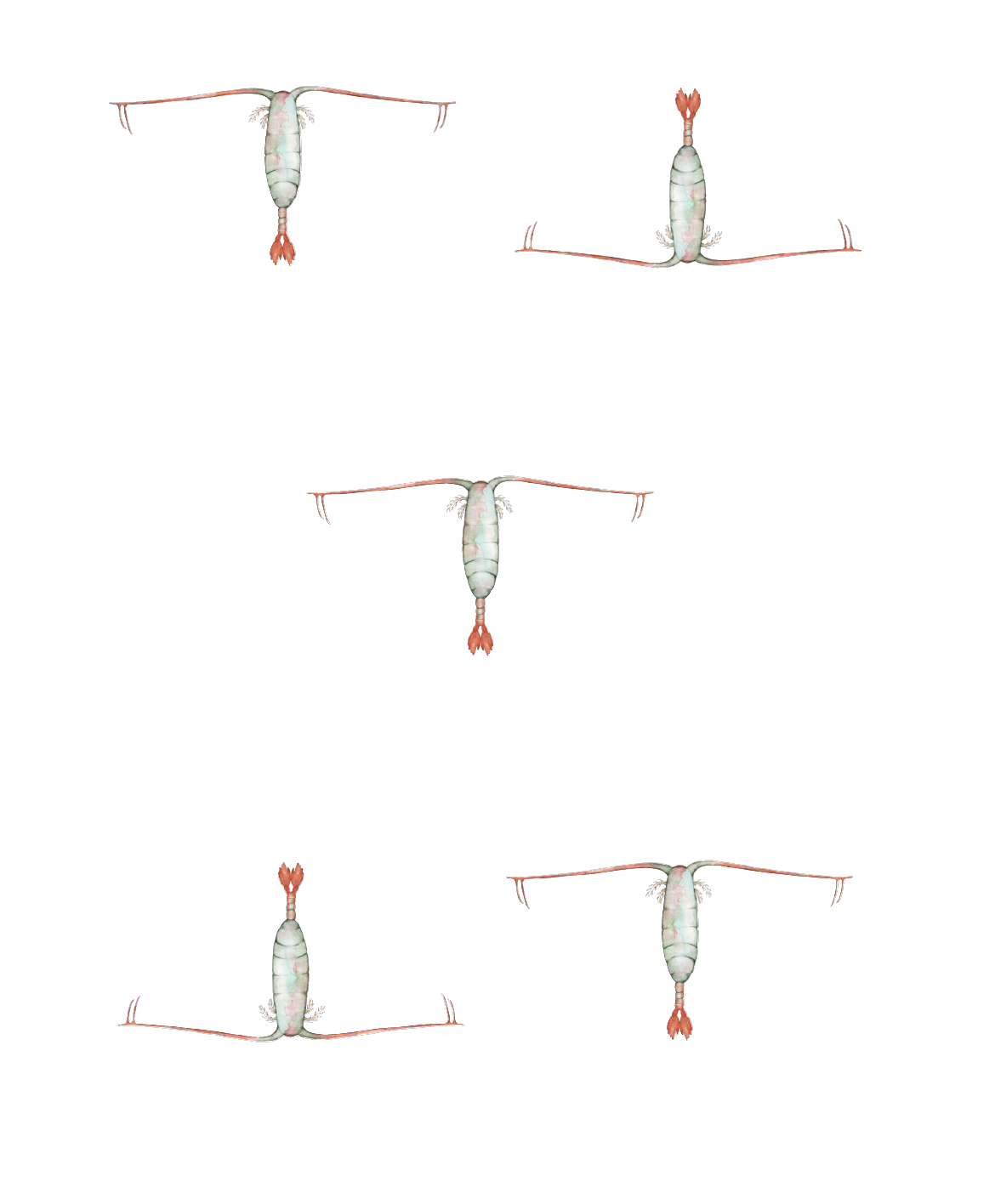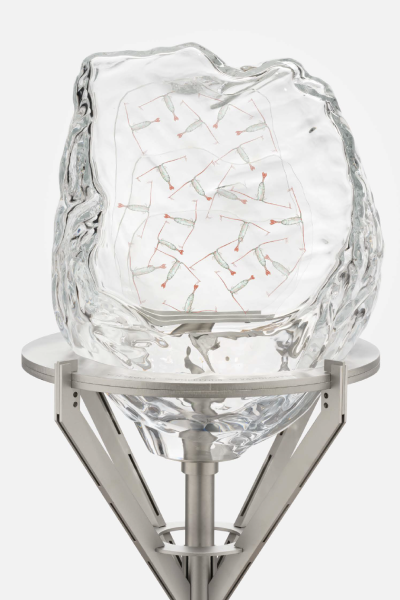THE COPEPOD
The copepod is the most numerous animal in the world. It is the first animal in the food chain in the Arctic.

In the Disko Bay and the Icefjord it is almost twice as big as copepods elsewhere.
In spring it eats itself fat and full up. In winter it stays at the bottom of the sea without eating.
What is a food chain?
Why is the copepod bigger in the Disko Bay and the Icefjord than elsewhere in the world?
In what does the copepod eat itself fat in springtime?
In winter it is pitch-dark in the Icefjord and the Disko Bay. Some microscopic algae have adapted so that they can live under the ice.
In spring when the sun breaks through the ice, they bloom.

Phytoplankton are algae suspended in the water.
The copepod is the most numerous animal in the world. It is the first animal in the food chain in the Arctic.

In the Disko Bay and the Icefjord it is almost twice as big as copepods elsewhere.
In spring it eats itself fat and full up. In winter it stays at the bottom of the sea without eating.
What is a food chain?
Why is the copepod bigger in the Disko Bay and the Icefjord than elsewhere in the world?
In what does the copepod eat itself fat in springtime?
In winter it is pitch-dark in the Icefjord and the Disko Bay. Some microscopic algae have adapted so that they can live under the ice.
In spring when the sun breaks through the ice, they bloom.

Phytoplankton are algae suspended in the water.




